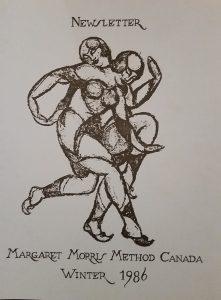
Coll-1842/6/1: Photograph of five male boxers [?] standing in a line, c.1950s
The Scottish Amateur Association of Gymnastics, Wrestling and Boxing, as it was originally named, was founded on 24 May 1890 by representatives of five Scottish gymnastics and athletic clubs. Prior to this, gymnastics in Scotland had close links with the British military, specifically the Army Physical Training Corps.
However, over the decades, Scottish Gymnastics increasingly broadened its remit to encompass the wider health and wellbeing applications of human movement. It has since gone on to compete successfully in many international competitions and to widen participation in gymnastics to school and pre-school children and people with disabilities.
The records catalogued include early minutes, a collection of publications, including some very early books on gymnastics and physical culture, photographs, audiovisual material, awards and medals. They are a fantastic resource for historians of sport and physical culture, revealing a century of shifting attitudes towards gender, fitness, exercise and education.

Coll-1842/5/6: ‘Pyramids for Strong Men Gymnasts &c’ by F.J. Harvey (Exeter, The Physical Training Publishing Company, 1907); Coll-1842/5/1: Coll-1842/5/3: ‘Manual of Physical Culture and System of Musical Drill’ by George Cruden (Aberdeen: Alexander Murray, 10th edition, 1902); ‘Gymnastics’ by A.F. Jenkin (London: George Bell and Sons, 1890).
We are also working with Scottish Gymnastics to encourage members to donate material, and are planning to host an event for members to view the collection and to help us identify some photographic material.
Parts of this collection will also receive conservation treatment and be selected for digitisation.

Coll-1842/8/6: Scottish Amateur Gymnastics Association Honorary Life Member pendant in presentation box, undated
The records of Scottish Gymnastics can be consulted at the Centre for Research Collections, University of Edinburgh Main Library. The catalogue can be viewed here:
http://archives.collections.ed.ac.uk/repositories/2/resources/86677
I am now looking forward to beginning work on the records of Dunfermline College of Physical Education, and continuing to catalogue the Margaret Morris collection.
Clare Button
Project Archivist







 Dunfermline College of Physical Education, founded in 1905, was one of the first training colleges for women students of physical education and had an important influence on developing the role of movement and the body in educational practice. The records comprise governance, staff and student records, teaching materials, artefacts
Dunfermline College of Physical Education, founded in 1905, was one of the first training colleges for women students of physical education and had an important influence on developing the role of movement and the body in educational practice. The records comprise governance, staff and student records, teaching materials, artefacts Scottish Gymnastics was founded in 1890 as a voluntary organisation representing a number of Scottish gymnastic and athletic clubs. Broadening its initial focus from military fitness to general health and wellbeing, it was significant for promoting and supporting gymnastics in Scotland and abroad. The archives contain minute books, correspondence, instructional material, photographs, rare books, journals and other printed material.
Scottish Gymnastics was founded in 1890 as a voluntary organisation representing a number of Scottish gymnastic and athletic clubs. Broadening its initial focus from military fitness to general health and wellbeing, it was significant for promoting and supporting gymnastics in Scotland and abroad. The archives contain minute books, correspondence, instructional material, photographs, rare books, journals and other printed material.